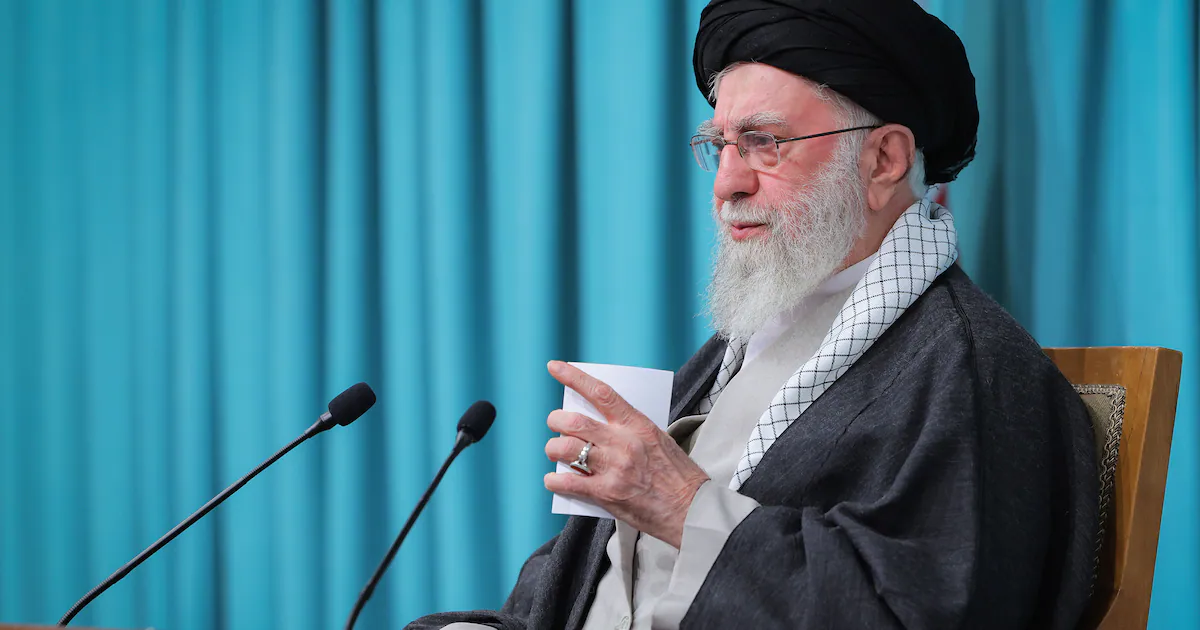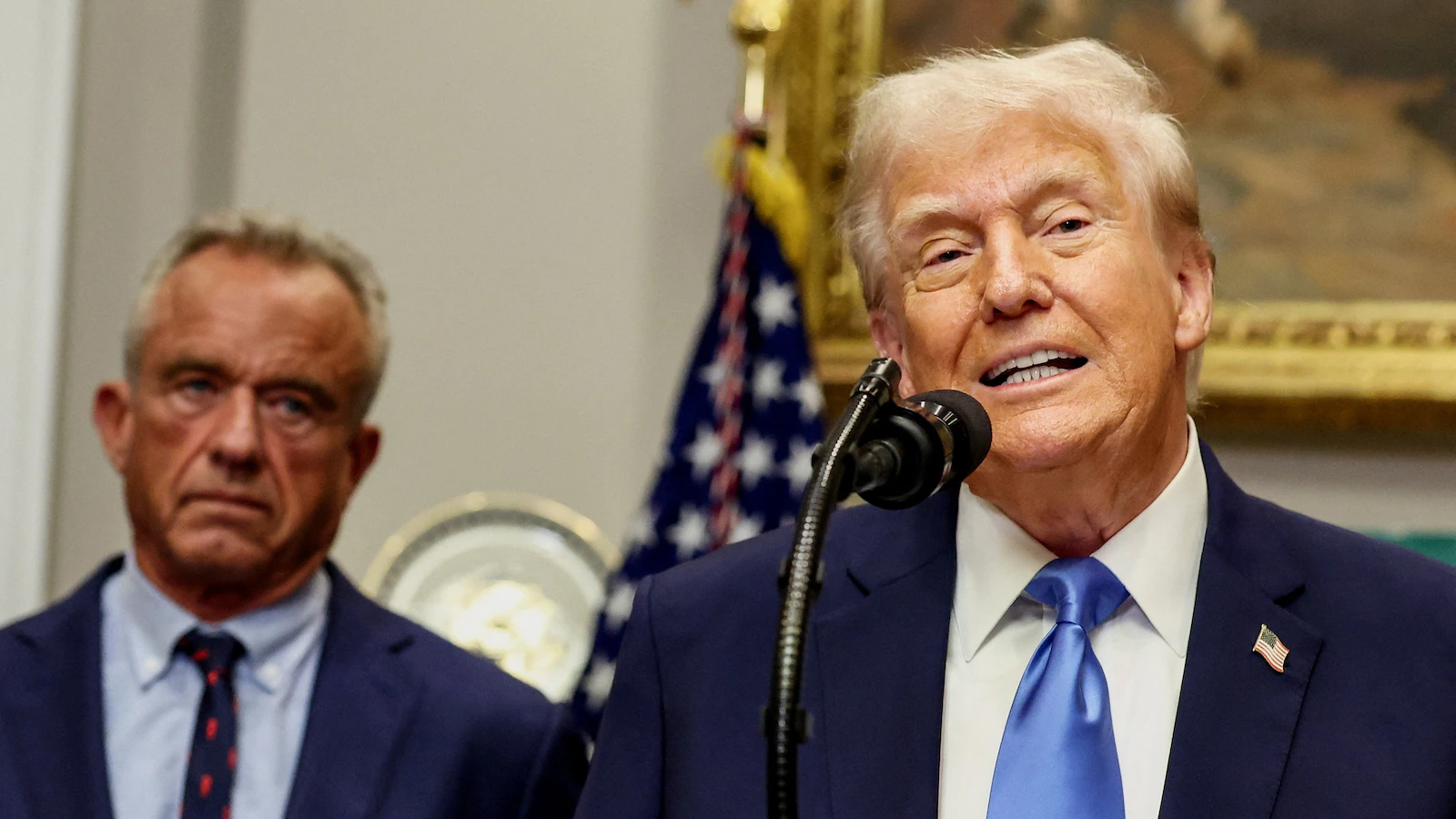
Iran has increased construction at a mysterious underground site in the months since the U.S. and Israel pummeled its main nuclear facilities, suggesting Tehran has not entirely ceased work on its suspected weapons program and may be cautiously rebuilding, according to a Washington Post review of satellite imagery and independent analysis.
The ongoing work is at a site known as Kuh-e Kolang Gaz La, or Pickaxe Mountain, where since 2020 Iranian engineers have been tunneling deep into the Zagros mountain range – about a mile south of the nuclear complex at Natanz, which was a target of U.S. bombing strikes on June 22.
The purpose of Pickaxe Mountain remains unclear. International nuclear inspectors have never visited and Rafael Mariano Grossi, director general of the International Atomic Energy Agency, said Tehran rebuffed his questions about the site earlier this year.
Analysts who have monitored its construction estimate the halls under Pickaxe Mountain may be even deeper – between 260 and 330 feet – than those at Iran’s Fordow facility, which U.S. warplanes struck with massive earth-penetrating bombs. The site’s aboveground footprint sprawls over roughly a square mile of mountainside, with a pair of tunnel entrances on the east and west sides.
Iran said in 2020, when it announced plans for the facility, that it would house a production plant for assembling centrifuges, fast-spinning machines for enriching uranium, replacing a site destroyed earlier that year in what Tehran called an act of sabotage.
Construction on the tunnels began that December, according to an analyst at the satellite firm Maxar. But its dimensions and depth have generated suspicions among analysts that it is intended for other purposes, either as a covert uranium enrichment facility or a secure storage site for Iran’s stockpiles of near-weapons-grade uranium.
The construction under and atop the mountain does not mean that Tehran is rushing headlong to rebuild its battered nuclear program and sprint toward a bomb, analysts say.
“The administration will continue to monitor any attempt by Iran to rebuild its nuclear program. As President Trump has said, he will never allow Iran to obtain a nuclear weapon,” said a White House official who spoke on the condition of anonymity because they were not authorized to speak on the record.
The CIA declined to comment about the new construction at the site, which U.S. intelligence agencies have been monitoring for years.
According to IAEA reports, Iran accumulated nearly 900 pounds of uranium enriched to 60 percent purity, a short step away from the 90 percent needed to fuel a weapon, before Israeli strikes began on June 13 local time. The fate and location of that stockpile is unclear, raising concerns that over time Iran could use it to covertly amass the ingredients for a nuclear device.
The new activity at Pickaxe Mountain appears intended in part to fortify it against possible future attack or infiltration. As far as is known, the mountain facility was not struck during the 12-day Israeli and U.S. bombardment of Iran’s nuclear infrastructure. “Post-attack, Iran may have decided to enlarge the facility to move additional activities underground,” said Jeffrey Lewis, a nuclear and nonproliferation expert at the James Martin Center for Nonproliferation Studies.
Three major changes to the facility since the June 22 U.S. strikes indicate ongoing construction, according to three experts in Iranian nuclear activities who reviewed satellite imagery at The Post’s request: the sealing of a security perimeter, the reinforcement of a tunnel entrance and an increase of excavated material known as spoil, which suggests continued building underground.
Recent satellite imagery also captured the presence of heavy equipment and construction vehicles.
“The presence of dump trucks, trailers and other heavy equipment … indicates continued construction and expansion of the underground facility,” said Joseph Rodgers, a fellow at the Center for Strategic and International Studies, which issued a report last month noting the activity at Pickaxe Mountain.
Since the end of June, 4,000 feet of the western edge of the security wall has been erected, bringing its full enclosure closer to completion, and a road has been graded parallel to the perimeter.
The concrete framing of one of the eastern tunnel entrances was covered with dirt and rock, consistent with construction of at least one other route into the underground facility. “The reason for covering the tunnel entrance … is to harden it against airstrikes, [making it] more difficult to collapse the entrance,” said Sarah Burkhard of the Institute for Science and International Security, which tracks nuclear proliferation.
Experts also observed that the spoil pile of excavated material next to the eastern tunnel entrances had modestly increased in size, which indicates continued tunneling activity.
“The fact they’re continuing to build this is significant,” Burkhard said.
Gauging Iran’s actions since June 22 has been made more difficult by its failure to fully cooperate with United Nations weapons inspectors.
Tehran and the IAEA reached an agreement on Sept. 9 that Grossi said would allow inspectors access to all Iran’s nuclear sites and require it to report on the whereabouts of its nuclear material. But Iran, which is protesting the potential reimposition of international sanctions, recently called that agreement into question and has sent mixed messages about its next steps for its nuclear program.
Iranian President Masoud Pezeshkian said last month that Tehran should pursue diplomacy with Washington and argued that if Iran rebuilt its nuclear sites, the United States would strike them again. His comments angered Iranian hard-liners, who accused him of weakness. Ayatollah Ali Khamenei, Iran’s supreme leader, has the final say on nuclear matters.
In an interview in Iran on Monday with PBS’s “Frontline” program, Ali Larijani, secretary of Iran’s Supreme National Security Council, said that if the sanctions were enforced, “we will end our participation with the IAEA.”
Asked whether the U.S.-Israel strikes had spurred new activity by Iran and if there was anything he could say about Pickaxe Mountain, Larijani replied: “No, nothing. We haven’t abandoned any of those locations. But in the future they could possibly continue to run as they currently do or be shut down.”
President Donald Trump has threatened new strikes if Iran were to enrich uranium at a high level again. Israel’s defense minister has suggested it could strike Iran again to prevent its development of nuclear projects or long-range missiles.
Iran has also begun rebuilding missile production sites that Israel targeted in its 12-day war with Iran in June, the Associated Press reported this week, citing commercial satellite imagery. The images show construction at two solid-fuel manufacturing bases, at Parchin and Shahroud, the report said, adding that Iran still apparently lacks huge mixers needed to produce fuel for the weapons.
Iran suffered severe damage at the three major nuclear facilities targeted in the U.S. strikes, commercial satellite imagery indicates. U.S. B-2 Spirit bombers dropped huge ground-penetrating bombs known as Massive Ordnance Penetrators on Iran’s uranium enrichment facilities at Fordow and Natanz. Tomahawk missiles fired from a U.S. submarine struck the Isfahan complex, which includes a facility where uranium gas is converted into a metal form that can be used in a nuclear weapon.
A Sept. 8 report by the Institute for Science and International Security concluded that the U.S. and Israeli attacks destroyed or rendered inoperable all of Iran’s almost 22,000 centrifuges at Fordow, Natanz and Isfahan. “For the first time in over 15 years, Iran has no identifiable route to produce weapon-grade uranium … in its centrifuge plants,” said the report, which was based in part on IAEA data.
Images from commercial satellites, which provide less granular and frequent data than U.S. spy satellites, show limited new activity at those sites. That indicates, analysts said, that Iran is wary of another round of airstrikes and may not have decided if or how to move forward with its nuclear program. “They seem to be playing it cool,” Lewis said.
In the aftermath of the U.S. strikes, a fierce debate raged over how far back they had set Iran’s nuclear program. Trump claimed that Tehran’s nuclear capabilities were “totally obliterated.” But secret U.S. government intelligence reports have been less clear-cut.
Assessments in July indicated that the strikes on Fordow, which was hit with 12 of the earth-penetrating bombs, had succeeded in collapsing its deeply buried infrastructure. But it was less clear whether Natanz and Isfahan received knockout blows.
Satellite images of Fordow from mid-July show that the impact craters from the U.S. strikes are being filled in, probably to prevent further collapse, and some construction of new dirt roads, Rodgers and two colleagues wrote in the CSIS report. “This activity indicates that there is an ongoing effort to stabilize the site, but there is no dash to resume enrichment,” it concluded.
Iran’s swiftest path to a bomb, analysts say, would probably involve further enriching its stock of 60 percent pure uranium, assuming it can get access to the material. The IAEA said in a Sept. 3 report that it does not know the location of the stockpile. Grossi told “PBS News Hour” on Monday that his agency believes the material is buried underground.
CIA Director John Ratcliffe told lawmakers in June that U.S. spy agencies assess that most of Iran’s enriched uranium is trapped under the rubble at Isfahan and Fordow.
Kelsey Davenport, director of nonproliferation policy at the Arms Control Association, agreed that the damage to Iran’s nuclear facilities was significant. But, she said, it would be a mistake to assume Tehran would simply seek to rebuild all of them at the same size and scope.
“The reality is, Iran doesn’t need anything that large,” and it could try to build a nuclear weapon deep underground if it emphasized secrecy over speed, Davenport said. “Iran still has the capacity to reconstitute fairly quickly if they make the decision to.”
– – –



